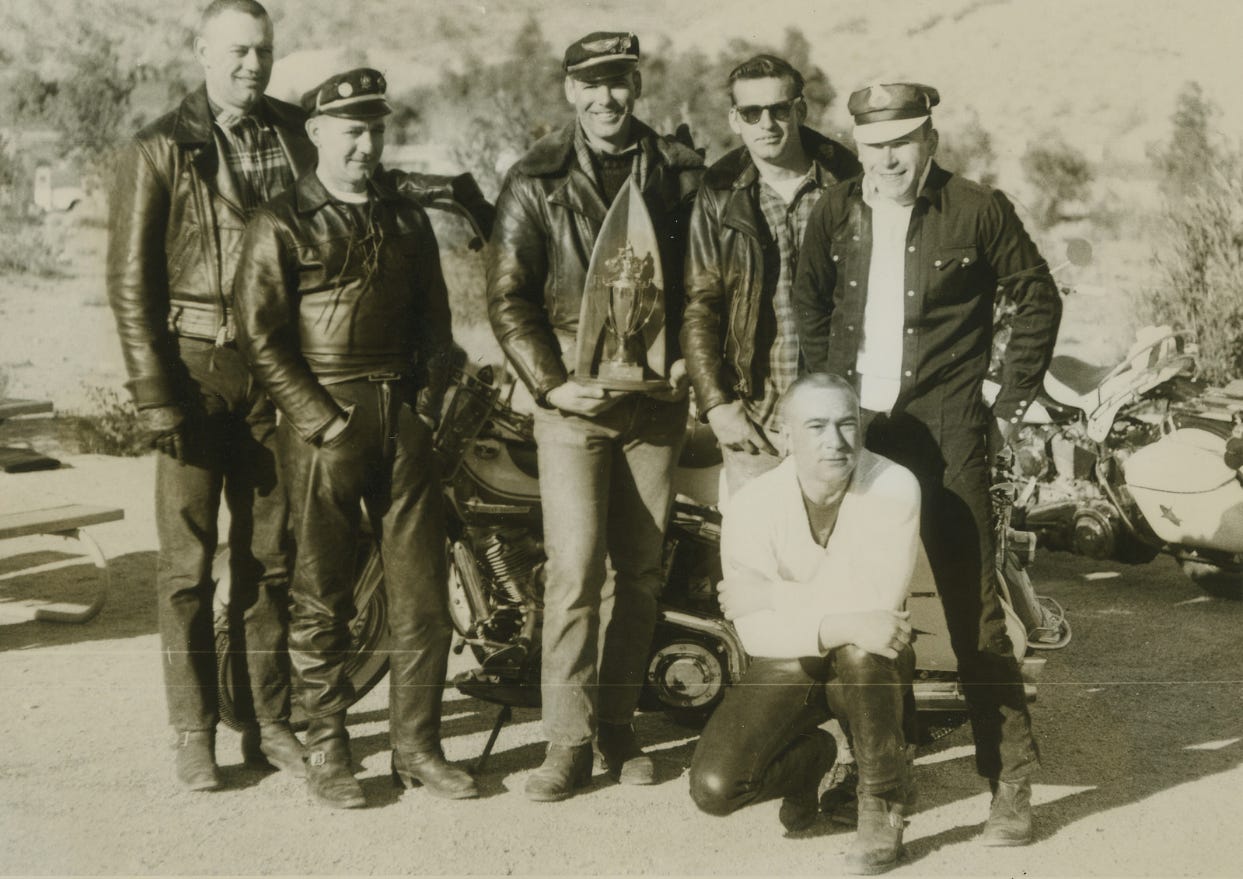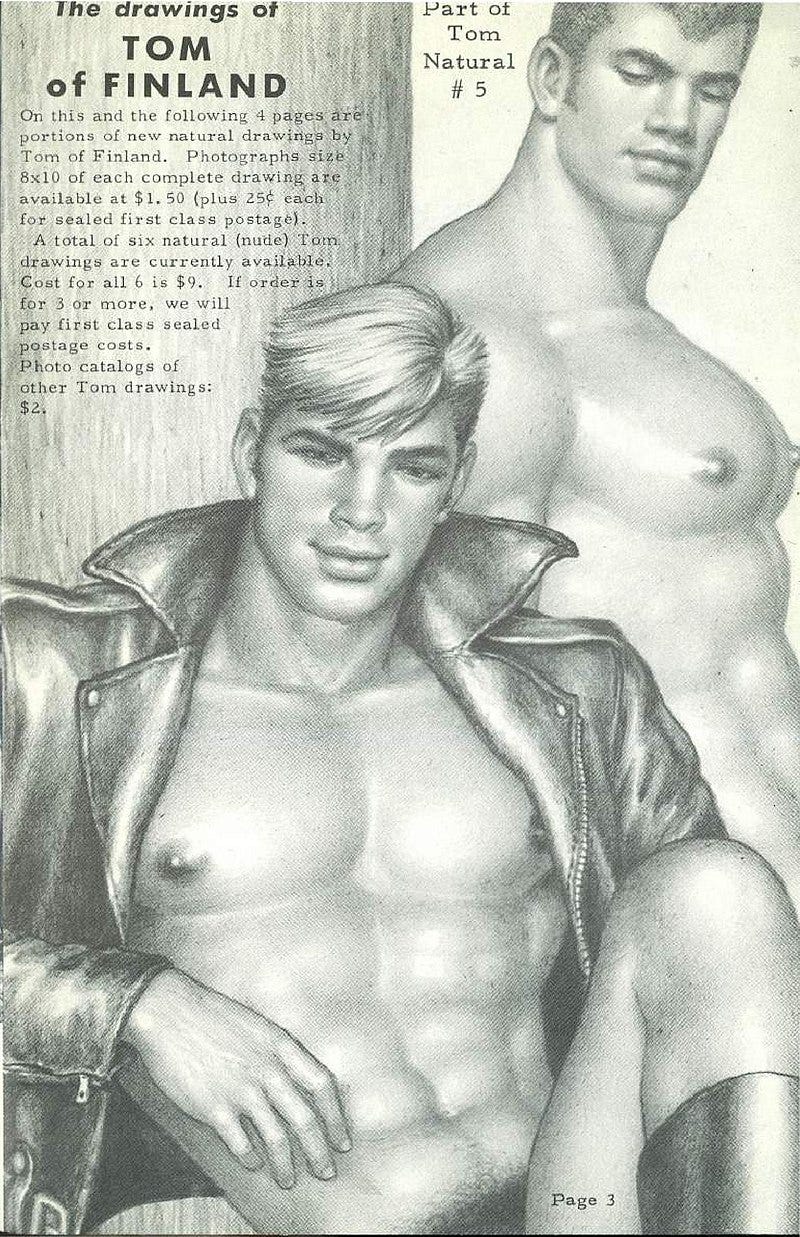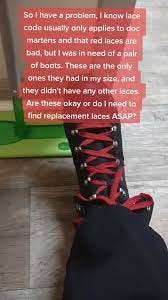Don we now our Gay apparel: — Part 2: Leather and Far-Right Extremism
Why your "vigilance" against dogwhistles may be generating more stigma against gay subcultures.
These pieces exist independently of each other, but if you’re interested, you can read Part 1 about the history of latex and its subculture here.
Let me preface this article with the following: I love leather gear. I consider myself lucky to belong to such a historically rich queer subculture. Leather means existing independently of society’s preconceived notions of gay people. I also think that wearing leather is an inherently political statement. It’s a declaration of your own gayness, and your affiliation with a long and storied subculture.
I wasn’t sure how to tackle the complex story of leather. It’s complex because there are so many different opinions about it, old guard traditions versus contemporary norms, leatherman culture versus leatherdyke culture, how it developed in North America versus its development in Europe… it’s a total behemoth of a subject. No way I could compile it all into one essay.
But then something happened in North America a few days ago.
In the midst of the Mid-Atlantic Leather contest this year, photos surfaced of the Tom of Finland Foundation cofounder donning Nazi regalia over the years. The photos ranged from hateful symbols on small buttons on jackets to full swastikas emblazoned on rubber gear. Photos also emerged from online profiles where common dogwhistles were displayed such as “WP” (white pride/power), using “SS” in his lexicon (a reference to the Nazi paramilitary organisation), and “88” (with the eighth letter of the alphabet being H, 88=HH. I trust you can figure this one out).
The community was in shock, although those from Los Angeles less so. Allegedly this information had been known for some time already.
IML responded promptly on Facebook with the following:
After this, Dehner was removed from the Leather Hall of Fame, and he resigned from the board of the Tom of Finland Foundation (TOFF). But the damage had been done. The credibility of TOFF was called into question, and concerns were raised that stakeholders and board members may have known about Dehner’s tendencies for some time, but either deemed it unimportant to challenge or hoped that it would never come to light.
Naturally, another issue was raised. The artwork produced by Touko Laaksonen, or Tom of Finland, has its very roots in the fetishisation of soldiers during WWII, especially Wehrmacht soldiers occupying Finland.
"In my drawings I have no political statements to make, no ideology. I am thinking only about the picture itself. The whole Nazi philosophy, the racism and all that, is hateful to me, but of course I drew them anyway—they had the sexiest uniforms!"
I feel the need to talk about far-right extremism in leather subculture for two reasons:
My background is as a political scientist. I’ve written for many years about the way that culture and politics are inseparable, and that one necessarily has an affect on the other. There is no such thing as an apolitical subculture.
I’m into leather culture, but with a critical eye. I believe that much of what we’re told about the “old guard” tradition is pure myth and fairytale. I display Tom of Finland’s artwork proudly in my house. I use hanky code. I take what resonates with me, and leave behind what I think doesn’t serve me or my community today.
Gay Motorcycle Clubs After WWII
A lot of leather culture we embrace today has its roots in biking culture. After WWII many men returned the United States and found themselves missing the fraternal nature of their platoons, longing for the brotherhood and the strict order that was maintained by certain unspoken rules. These fraternal organisations were recreated in motorcycle clubs across the United States after the war.
From these original clubs in the 1950s, gay motorcycle clubs soon came into existence. The Satyrs, founded in 1954, is one of the oldest continuously operated gay associations in the United States. Clubs grew and exploded in popularity in the 70s with hundreds of men belonging to clubs across the country at any given time. These organisations developed their own rituals, identities, and traditions, and gave men a sense of camaraderie during the worst of McCarthyism.
What we consider to be the standard BLUF (Breeches and Leather Uniform Fanclub) uniform of today is largely lifted from the roots of military aesthetics as well as motorcycle club aesthetics. The gay bikers existed in strict opposition to society’s perception of homosexuals as weak, effeminate, and limp-wristed.
The homoerotic images of über-masculine men drawn by Tom of Finland and other artists were disseminated through “beefcake” magazines, dedicated to the portrayal of muscular men. These drawings became aspirational for a generation of gay men who sought to emulate these rough-and-tumble aesthetics in their personal lives.
The National Socialist League (1974-1984)
A few months ago I discovered a digital archive of vintage Drummer Magazines, archived by a hero known as Cowboy Frank. Naturally, I went back to look at the earliest editions of the magazine, wanting to know the humble roots of this iconic piece of gay leather history. Issue 002, published in August 1975, has everything you would expect from such a magazine. Photos of cute guys in compromising positions, dicks, and all kinds of smut and filth. Some blue language we would describe today as problematic, but nothing totally out of the ordinary for that time period. However, I was quite taken aback when I saw this small advertisement in its back pages:

There isn’t a lot of information about the National Socialist League (NSL) online, but I was able to glean a few things. The organisation existed from 1974-1984, and was led by a Neo-Nazi called Russell Veh. Veh was one of the largest disseminators of fascist books, films, and propaganda in the United States at the time. According to the Encyclopedia of White Power by Jeffrey Kaplan (2000), the NSL made the following pitch to potential members:
“We are now organising a national membership to again replant the seeds of National Socialism.
Here is where we separate the men from the boys.
The N.S.L. believes that there are many who dig National Socialist uniforms, medals, and the “sexual trip” that was prominent in Nazi Germany with the S.S. and the S.A. …”
And to drive home the point, the journal ends with a drawing of two obviously gay Nazis in a barracks with swastikas covering their genitals and the logo “$6.00 Subscribe! This year!”
The group argued that gay men served a unique function in the structure of white nationalism: their role was to be a military and cultural vanguard in the movement. It harkens back to the role that gay men saw for themselves in the Nazi movement of the 1930s, and Ernst Röhm’s view that gay men in particular had a unique role in shaping the future of masculinity in a National Socialist state. Veh sought to seize on strong homosocial bonds between men to engender his movement, and to create a hegemonic order of masculinity that would be highly desirable to new recruits.
Somewhat unsurprisingly, the activities of the gay National Socialist League petered out and never really developed much beyond being a quirky social organisation in California. The American National Socialist community was quite repulsed by the personal ads section in the NSL’s NS Kampfruf magazine, which revolved heavily around leather fetishism and S&M. Like Ernst Röhm before him, Russell Veh found himself on the receiving end of the ire and fury of fellow White Nationalists who believed open homosexuality weakened their movement rather than strengthened it.
Similar to the skinheads, the NSL attempted to engage their masculinity via demonstrations of their raw sexual power, and to disabuse others of their undesirable gay stereotypes, confirming that “real Nazis don’t eat quiche.”
“Demons in the City of Angeles": Gay Neo-Nazis in Southern California by Emma Bianco (2023)
The antics of the NSL were firmly rebuffed by the wider gay community in Southern California after their attempt to join the 1977 Christopher Street West Association gay pride parade in LA, and NSL meetings often devolved into little more than convenient cruising opportunities rather than forums for serious political discussion.
The NSL quickly faded into obscurity by the 80s, and Veh busied himself with White Nationalist projects with no relation to homofascism.
Leather Gear Today: Dogwhistles, Misinformation, and Blanket Bans on Military Insignia
There is a LOT of misinformation about what is and isn’t dog whistling. Let’s start with the most prominent recent example of flagging that has been totally butchered by chronically online Zoomers: LACE CODE.
The concept is nothing new: certain coloured laces are meant to signal different ideologies or interests, like hanky code. Sounds simple enough, right? Apart from the fact that there is no such thing as a universally accepted lace code, different coloured laces mean different things in different countries and subcultures, and a lot of people wear different coloured laces just because they like those colours!!!
Suddenly, you now had people claiming left right and centre that blue meant you had killed a cop, red meant you were a nazi, and white meant you were a white nationalist. The rapid dissemination of false information has simply become accepted fact for many people, and in an effort to remain vigilant, these people have stirred up a needless panic.
I’ve seen people falsely claim that muir caps are a Nazi symbol- this has simply not been true since the 1930s. The muir cap as we know today originates from leather caps worn by Nazi soldiers who rode motorbikes, but since then the cap has evolved so much it has scarcely any connection with its origins. Most people aren’t even aware of its historical origins, as it’s more commonly associated with American biker culture than anything else.
The muir cap, in a similar way to coloured laces, has become a victim of misinformation and “vibes” being accepted as fact by a new generation.
There are a small number of leather folk who either hold far-right views or fetishise Nazism. They are a vanishingly small group and are getting smaller as time goes on, and their online communities are so deeply insular and guarded that they almost keep entirely to themselves.
“Okay, let’s just ban any kind of military insignia, period. How about that?”
The way most spaces avoid any kind of misunderstanding on the subject is to have a blanket ban on military insignia of any kind. I’m not totally convinced this is the best way to address this issue.
If we falsely feed into the claim that leatherpeople are a hop, skip, and jump away from full-on Neo-Nazism, and that our traditional aesthetics should be consigned to the dustbin of history, we simply continue to affirm the stigma attached to our community. We lose a part of ourselves and in the process give credence to falsehoods that are weaponised against us to shame us into submission.
I found the following post about the history of eagles in leather from bootblack.events on Instagram to be very agreeable on the subject:
Questions you can ask yourself about wearing controversial gear:
What does this gear mean to me personally?
Could it evoke different or harmful interpretations in others?
Am I comfortable with the potential for misunderstandings or controversy?
How does the context in which I wear it (private vs. public, personal vs. community events) impact its meaning?
Someone on Reddit very helpfully replied the following to an individual who was concerned that their classmate’s white shoelaces meant they were potentially a white nationalist:
You would also be able to tell if he was politically aligned with the nazi party by simply listening to how he talks about POC, much easier than diving into subculture.
And that reflects quite succinctly how I feel about the matter.
As part of my research I watched the documentary Männer, Helden und schwule Nazis (Men, Heroes and Gay Nazis) (2005) by the brilliant German filmmaker Rosa von Praunheim. This documentary doesn’t have a narration overlayed reminding you over and over again how strange and despicable these men are, but rather gives the men space to speak on their own terms. In the first ten minutes, one subject candidly describes how he knows of a man who was once so aroused by the sight of the membership card of a Neo-Nazi party that he masturbated to it and then promptly joined the party after the fact. He also casually mentions that he knows of many members of the party who are purposefully secretive of their sexualities, some even serving at the highest levels.
The reality of far-right extremism becoming normalised is knocking at our door. They occupy the halls of power, they self-organise in parties across Europe and North America, and their racism cloaked in right-populist rhetoric is quickly becoming the norm. Calling out those who wear offensive symbols when and where we see it is absolutely necessary, but we also don’t need to labour the point and extoll 100% of our energy on a matter which is frankly chicken feed compared to what’s coming. I simply cannot find it in me to care about what an American bald eagle badge on a hat may or may not be implying when my human rights are being threatened.
I would say “touch grass”, but I’ll do you one better: go touch some leather. Touch an attractive leatherperson, admire their outfit, and enjoys each other’s company. Enjoy today, and be prepared to organise tomorrow.












Re: Lace code, could this be stemming from UK skinhead culture? I’ve heard from many sources that white nationalist skinheads would wear white laces in their boots (c. 1970s/1980s) and that SHARPS (skinheads against racial prejudice) wore purple to differentiate themselves. Is this not the case?
Really really interesting piece. I'm Gen Z/Millennial cusp, and it makes me sad that so much of the younger generation is gleaning insight off of Tik Tok. I'm not a user, but I imagine it can be a good jumping off point for discovering new topics, but I think the app as a whole does not foster curiosity, and instead lends itself more to a fear response and a black or white outcome. History is so nuanced! Life is so nuanced!